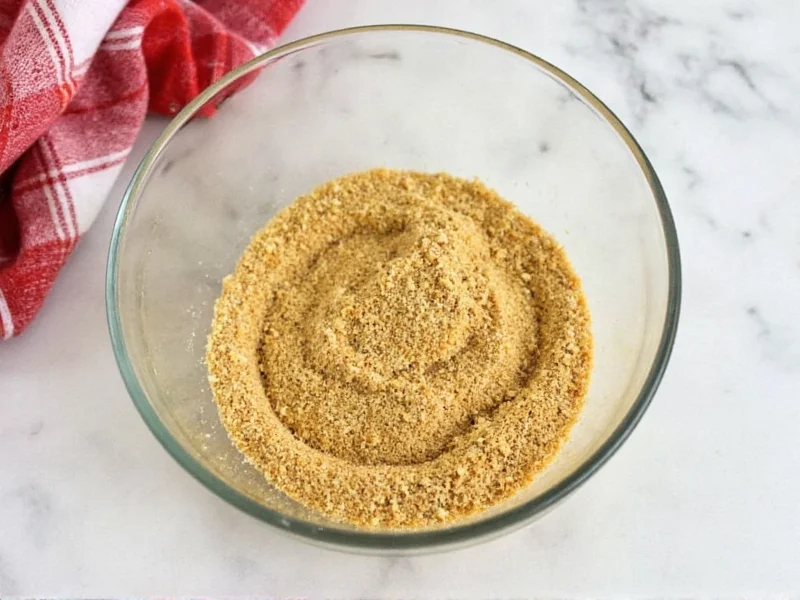Understanding Ranch Seasoning: More Than Just a Flavor
Ranch seasoning has become a pantry staple in American households since its creation in the 1950s by Steve Henson. What started as a buttermilk-based dressing at Hidden Valley Ranch in California has evolved into a versatile dry seasoning blend that home cooks and professional chefs rely on for consistent flavor without the moisture of traditional dressing.
Core Ingredients of Ranch Seasoning
The magic of ranch seasoning comes from its carefully balanced blend of dried ingredients. While commercial brands may have proprietary variations, authentic ranch seasoning typically includes:
- Dehydrated buttermilk or sour cream powder (the foundation)
- Garlic powder (providing savory depth)
- Onion powder (adding sweetness and complexity)
- Dried dill weed (contributing the signature herbal note)
- Dried parsley (for freshness and color)
- Thyme and/or chives (in many premium blends)
- Salt and black pepper (for seasoning balance)
- Maltodextrin (in commercial blends as a carrier)
Unlike ranch dressing which requires refrigeration and has a limited shelf life, ranch seasoning's dry formulation makes it stable at room temperature for 6-12 months when properly stored.
Ranch Seasoning vs. Ranch Dressing: Key Differences
Many home cooks confuse ranch seasoning with ranch dressing, but they serve different culinary purposes. Understanding what is ranch seasoning made of versus ranch dressing helps you use each product effectively.
| Characteristic | Ranch Seasoning | Ranch Dressing |
|---|---|---|
| Form | Dry powder or granules | Liquid emulsion |
| Primary Base | Buttermilk powder | Buttermilk or sour cream |
| Shelf Life | 6-12 months unopened | 1-2 months refrigerated |
| Water Content | None | High (70-80%) |
| Best Uses | Dry rubs, seasoning mixes, baked goods | Dips, dressings, sauces |
| Conversion | 1 tbsp + 1 cup liquid = dressing | Not directly convertible to seasoning |
Practical Applications in Cooking
Knowing how to use ranch seasoning properly can transform your cooking. This versatile blend works in applications where traditional dressing would make dishes soggy or alter texture:
Meat and Poultry Preparation
Use ranch seasoning as a dry rub for chicken, turkey, or pork before roasting or grilling. The buttermilk powder helps tenderize while the herbs create a flavorful crust. For perfect results when wondering what ranch seasoning is good for with meats, apply 1-2 tablespoons per pound of meat 30 minutes before cooking.
Vegetable Enhancement
Toss roasted vegetables with ranch seasoning for a savory boost. The dry formula adheres well to vegetables without making them soggy. Try 1 teaspoon per pound of vegetables before roasting for optimal flavor distribution.
Baked Goods and Snacks
Incorporate ranch seasoning into bread dough, crackers, or popcorn for instant flavor. Many commercial snack manufacturers use ranch seasoning on chips and pretzels because it sticks better than liquid dressing and provides consistent flavor.
Creating Your Own Homemade Ranch Seasoning
Understanding what ranch seasoning is made of allows you to create your own custom blend. Here's a simple recipe that answers the common question about how to make ranch seasoning from scratch:
Basic Homemade Ranch Seasoning Recipe
- ¼ cup buttermilk powder (essential for authentic flavor)
- 2 tablespoons dried parsley
- 1 tablespoon dried dill weed
- 1 tablespoon garlic powder
- 1 tablespoon onion powder
- 1 teaspoon dried thyme
- 1 teaspoon salt
- ½ teaspoon black pepper
Mix all ingredients thoroughly in a small bowl. Store in an airtight container away from light and moisture. This blend will stay fresh for 3-4 months.
For those seeking what ranch seasoning is without buttermilk (for dietary restrictions), substitute sour cream powder or increase the garlic and herb components to compensate for the missing dairy note.
Storage Guidelines for Maximum Freshness
Proper storage ensures your ranch seasoning maintains its flavor profile. Keep these tips in mind:
- Store in an airtight container away from heat and light
- Avoid introducing moisture (don't use wet utensils)
- Commercial blends typically last 12 months unopened, 6 months after opening
- Homemade blends last 3-4 months due to lack of preservatives
- Check for fading color or loss of aroma as signs of degradation
Common Questions About Ranch Seasoning
Understanding ranch seasoning better helps you use it more effectively in your cooking. Here are answers to frequently asked questions:











 浙公网安备
33010002000092号
浙公网安备
33010002000092号 浙B2-20120091-4
浙B2-20120091-4